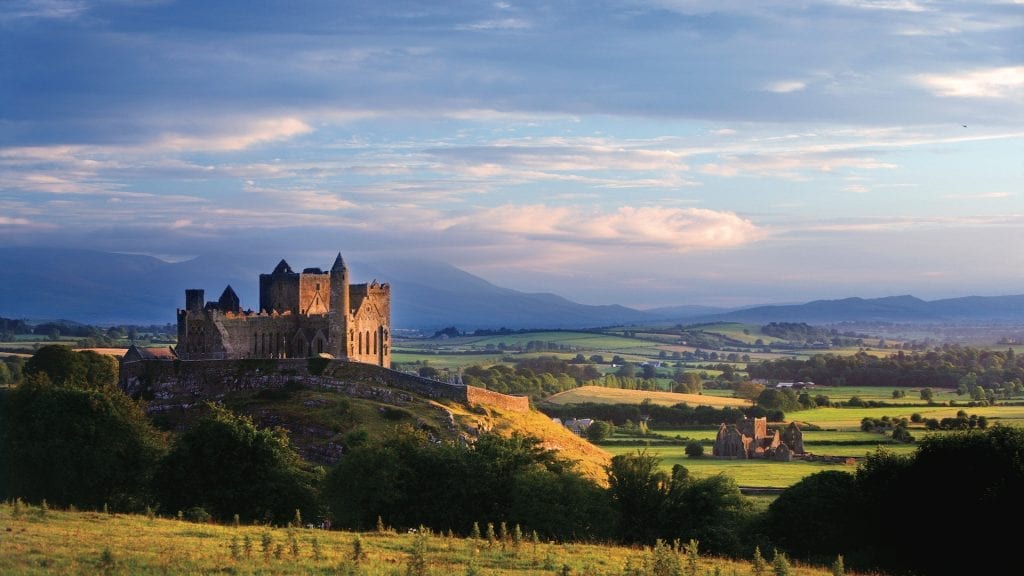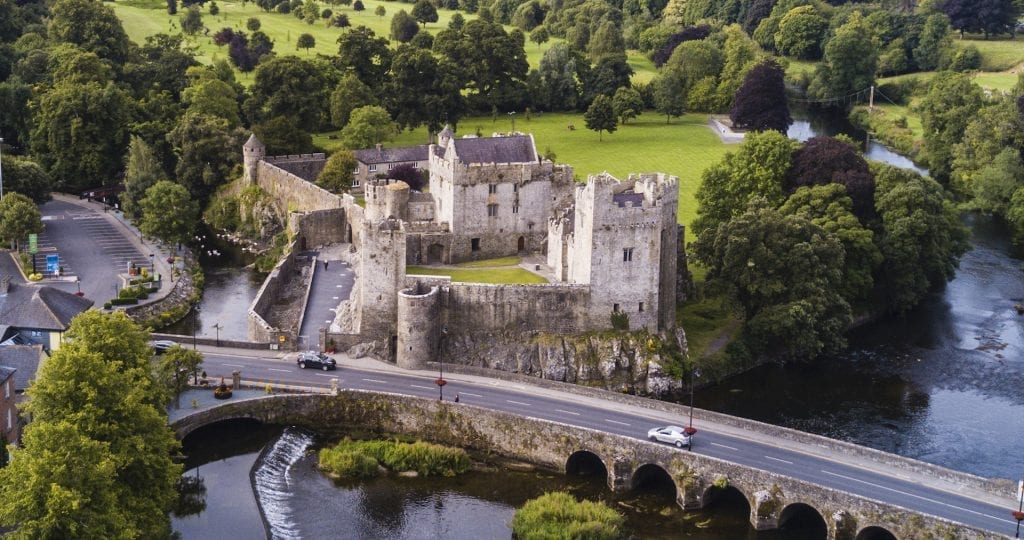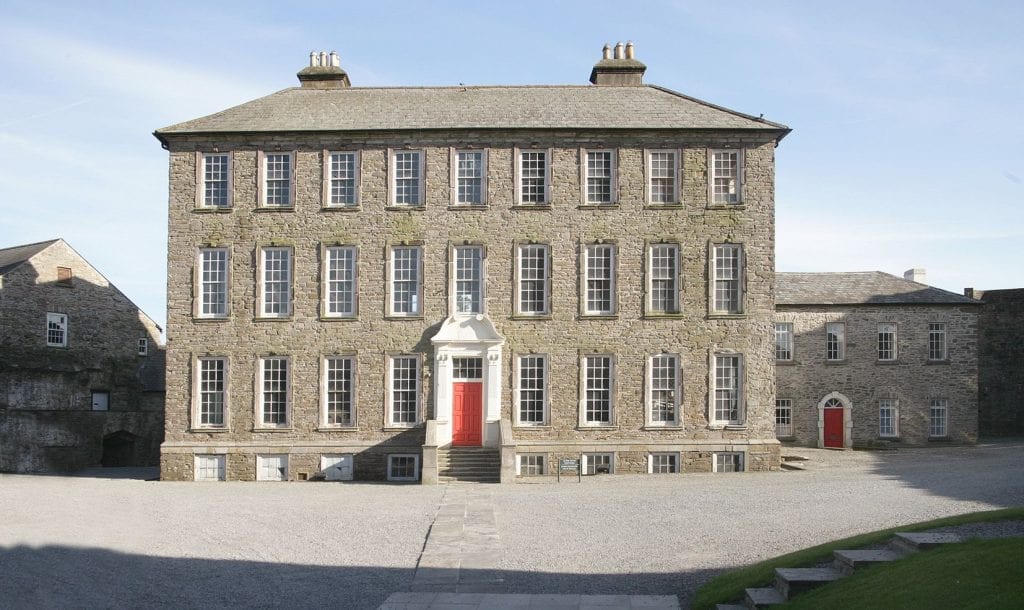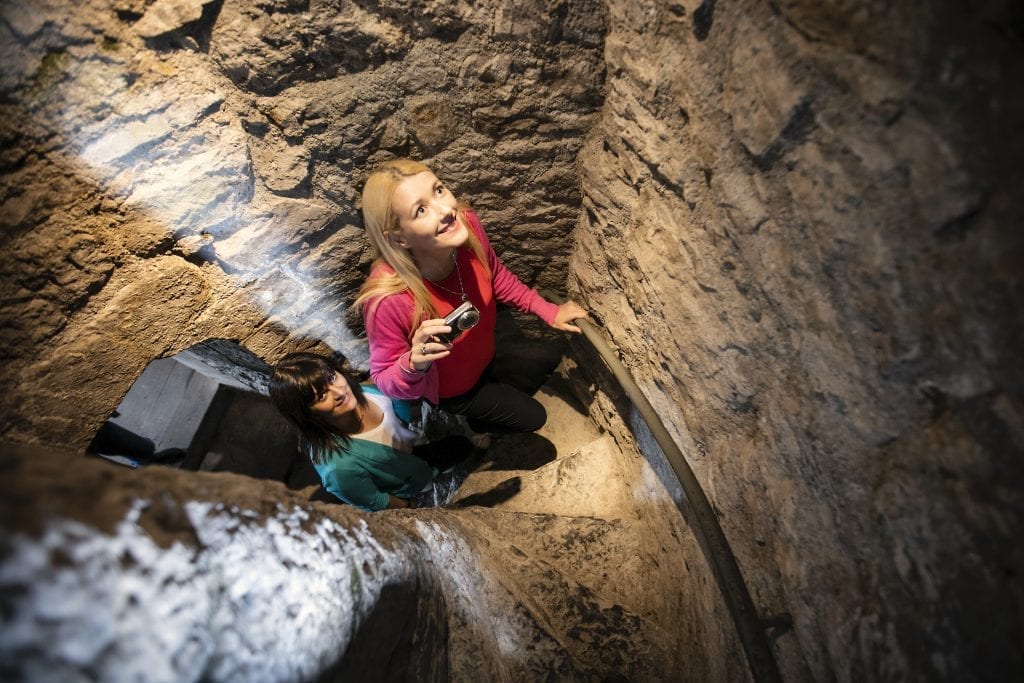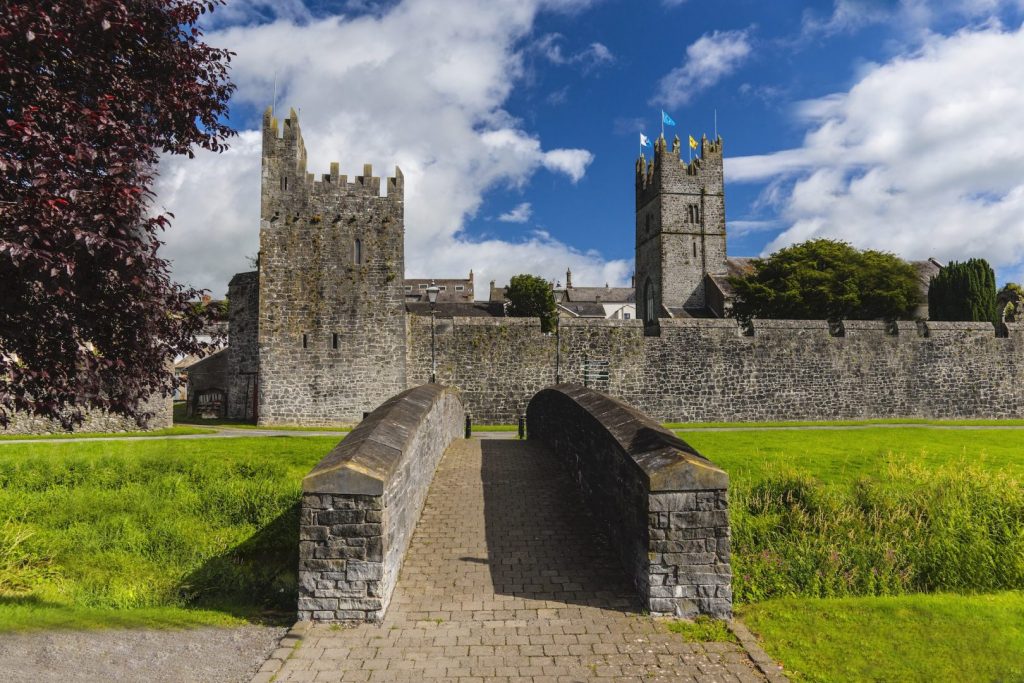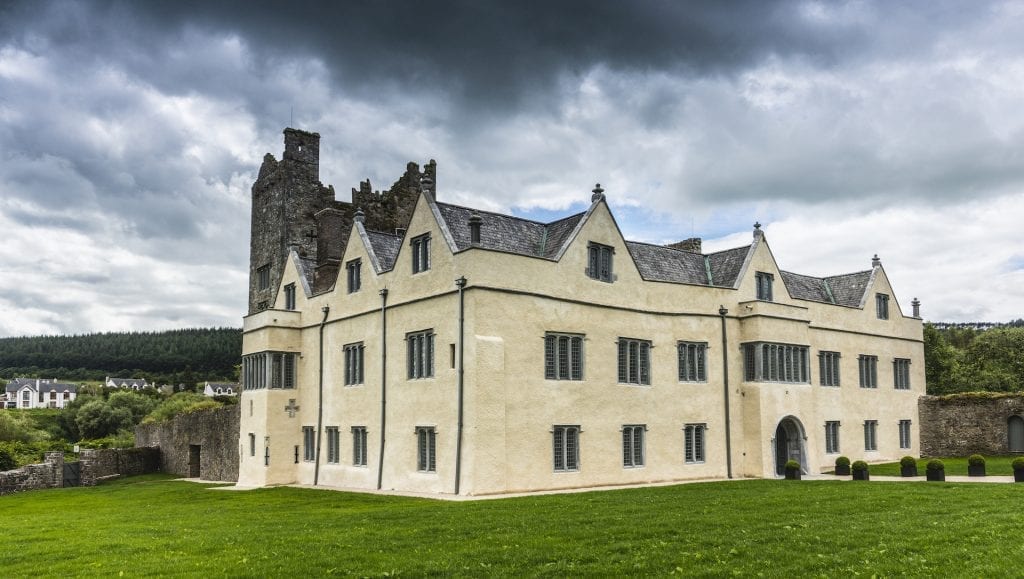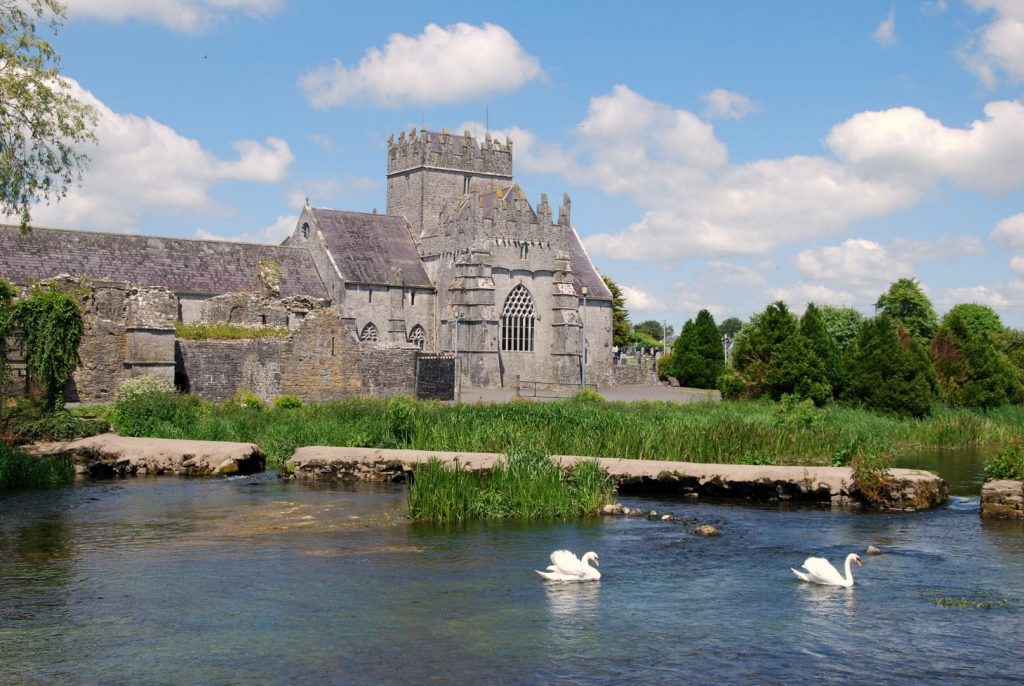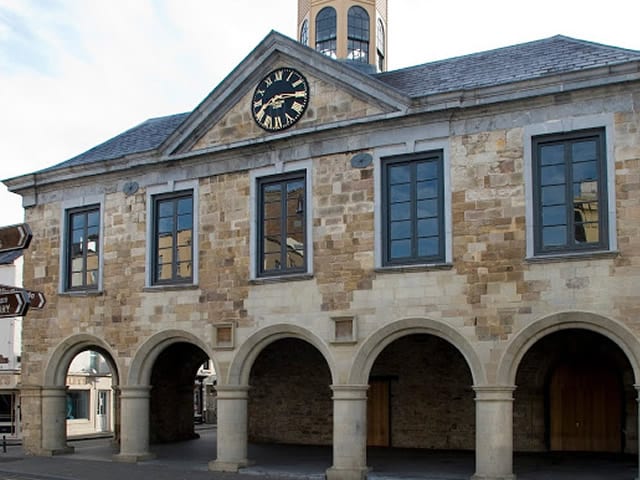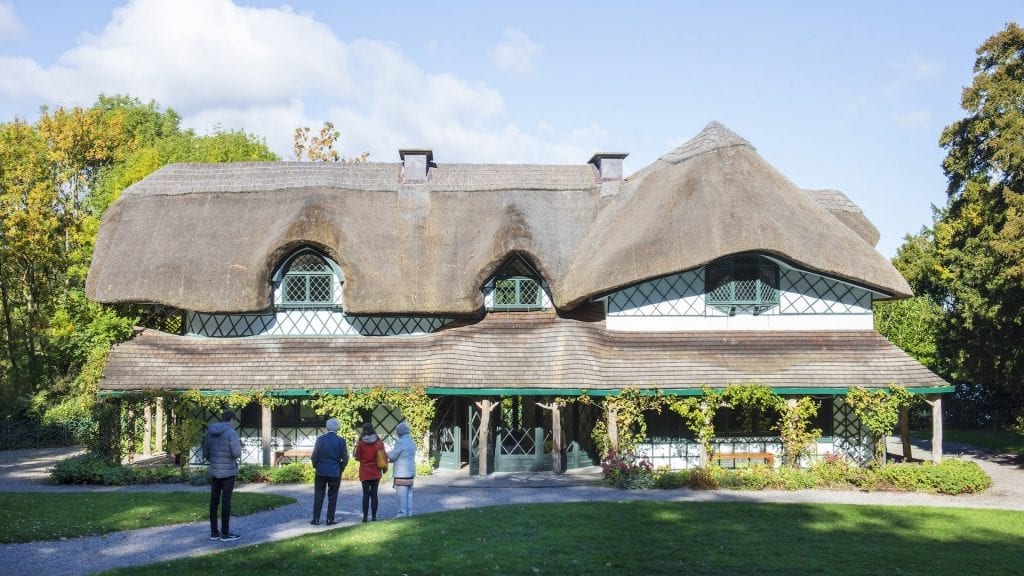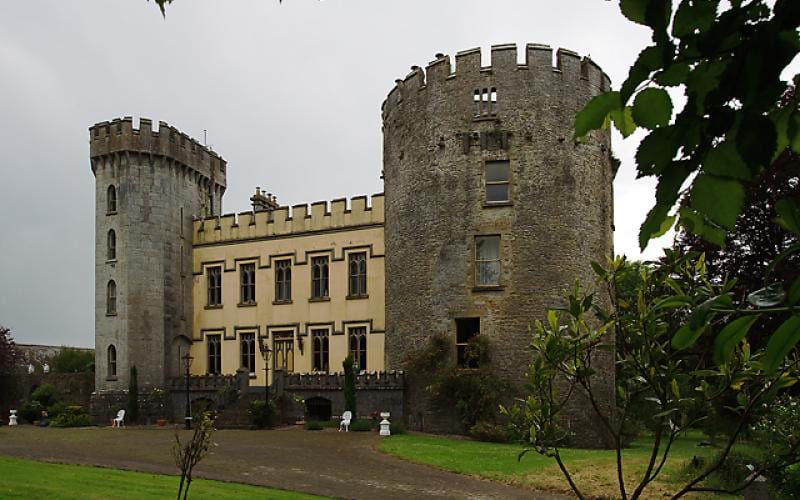Castles and Conquests
Overview
Travel to the heart of medieval Ireland, to a time of turrets, towers and battlements when the Normans held sway. Savour the stories of the family dynasties and castles which played host to the battles, romance, rivalries and rebellions which shaped Ireland for centuries to come.
Tipperary’s beautiful landscapes have been shaped by a turbulent and often bloody past, where power was won and lost, where alliances were formed and betrayals unearthed, where villains and heroes earned their reputations.
From the iconic Rock of Cashel to picture perfect Cahir Castle, the Elizabethan splendour of Ormond Castle, the bloody history of Roscrea Castle, the seemingly indestructible Nenagh Castle, and Leap, the ‘world’s most haunted castle’,
Here are 10 of the best castles to visit in Tipperary…
Rock of Cashel
The Rock of Cashel is one of the most spectacular and iconic landmarks in Ireland. Perched on an elevated limestone plain, overlooking the Golden Vale, it is an incredible sight to behold. The history of the rock implicates the Devil himself. The story goes that the Rock was originally part of a mountain that stands 30km north of Cashel (the Devil’s Bit). During an epic battle between St Patrick and the Devil, the Devil bit a chunk of rock out of the mountains and spat out the rock, which landed in Cashel.
Once the traditional seat of the kings of Munster, it is one of the foremost pieces of Celtic art and medieval architecture in Europe. Most of its buildings date back to the 12th and 15th centuries. Audio-visual shows and exhibitions bring centuries of the Rock’s incredible stories to life. It is an integral monument in Ireland’s Ancient East and whether you are exploring solo or listening to the lively narrations of a guide, it is a must see.
Visit Website
Phone: +353 (0) 62 61437
Email: rockofcashel@opw.ie
Location: View On Map
Cahir Castle
Cahir Castle, one of Ireland’s largest and best preserved castles, offers an authentic experience of medieval Ireland. Its location on a rocky island on the River Suir served as a great defensive site for centuries and ensured that it was difficult for attackers to conquer the fortress.
This imposing Norman structure was built between the 13th and 15th centuries and retains its impressive keep, tower and much of its original defensive structure.
Once the stronghold of the powerful Anglo-Norman family, the Butlers, it was the scene of sieges and bombardments for centuries. You can still see two cannon balls lodged in the wall of the towers.
The castle was captured three times in its history: it first fell to Devereux, Earl of Essex, in 1599 after it had been battered for three days with artillery; it surrendered without a fight to Inchiquin in 1647; and again to Cromwell in 1650. In 1961, the last Lord Cahir died and the castle reverted to the State.
An excellent audio-visual show informs visitors about its eventful history, although a guided tour provides the best understanding of the historic background of the various buildings and gives a thorough insight into the daily life of the castle at the height of its use. Guide books are available in English, Irish, French, German, Italian, and Spanish.
Visitors can also experience the leisurely 2km Coronation Walk from Cahir Castle to the romantic Swiss Cottage.
Visit Website
Phone: +353 (0) 52 744 1011
Email: cahircastle@opw.ie
Location: View On Map
Roscrea Castle & Damer House
Roscrea Castle is an amazing 13th-century royal castle located in the heart of Roscrea. The castle grounds consist of a gate tower, curtain walls and two corner towers.
The original wooden tower and motte were built on the orders of King John of England in 1213, while the current stone castle was built after his death and dates from 1280.
In 1315, the Castle was granted to the Butlers of Ormond, who held it until the early 18th Century. The castle’s most bloody episode occurred in 1646 during the Confederate and Cromwellian Wars when Eoin Roe O’Neill took the Castle with a force of 1,200 men and reportedly killing every man, woman and child there whilst doing so, save for the town governor’s wife, Lady Hamilton, who was a sister to the Earl of Ormond. In 1650, Roscrea town surrendered to Oliver Cromwell, and his son, Ireton, quartered in the Castle.
Today, Damer House (pictured) can be found in the courtyard of Roscrea Castle. Built by Joseph Damer in the early 18th Century, this sophisticated three-storey Queen Anne-style house is an example of pre-Palladian architecture. Come and see the splendour of these two amazing pieces of architectural design. There are exhibitions and guided tours, while visitors can also explore nearby St Cronan’s Church and round tower. An essential stop on the trail of Ireland’s Ancient East.
Visit Website
Phone: +353 (0) 505 21850
Email: roscreaheritage@opw.ie
Location: View On Map
Nenagh Castle
Rising to a height of 100 feet, Nenagh Castle boasts the finest cylindrical keep in Ireland. The castle was initially built as a military castle between 1200 and 1220 by Theobald Fitzwalter (1st Baron Butler) with defence in mind. Its walls are ‘splayed’ at the base to protect them from cannon fire and curved so that missiles ricocheted outwards on to attacking forces.
Earls, barons, rebels, tyrants and arsonists have all made an indelible mark on this castle’s architectural structure during its turbulent history.
It was at Nenagh Castle, in 1336, that a peace treaty was signed between James, the 1st Earl of Ormond, and a representative of the O’Kennedy family. More than 600 years later, the treaty (which was broken by the untrustworthy O’Kennedys) was presented as a gift to US President John F Kennedy during his state visit to Ireland in 1963. It is now housed in the JFK Library in Massachusetts.
The castle changed hands on many, many occasions during its long history until, in 1692, William of Orange ordered its demolition so that it would be “rendered indefensible in ill hands” – by which, of course, he meant the Jacobites who were challenging him for the throne. Even then, however, the keep was only partly damaged.
This medieval landmark is hugely significant to Ireland’s historical past, a treasure of Ireland’s Ancient East not to be missed. Free admission and free guided tours.
Visit Website
Phone: +353 (0) 67 33 850
Email: castlenenagh@gmail.com
Location: View On Map
Fethard Medieval Town
So much more than just a castle, Fethard is a near perfect example of a walled town. The encircling Town Wall, the Holy Trinity Church (c 1200), and the Augustinian Abbey (1305) were all built by the Anglo Normans and are still in use today – unique, even in the history-strewn countryside of Ireland.
The Wall Walk and the South Battlements look out across the wooded countryside to Slievenamon, the mountain of the fair women. It was here that Fionn Mac Cumhail – the legendary Irish giant who led the band of Irish warriors known as the Fianna and created the Giants Causeway – found his wife, Grainne.
A 2km heritage trail through the town takes about an hour to complete.
Fethard is also home to a fascinating boutique collection of Sheela-na-gigs. These medieval carvings, located at the abbey at nearby Kiltinan Castle and at a section of the old fortified wall at Watergate Street are all explicit portrayals of naked women, possibly created to evoke fertility or ward off evil.
You can also visit the wonderfully restored Tholsel (built as an Alms House in the very early 1600s) where you will discover Tipperary’s unique equine heritage in the Fethard Horse Country Experience exhibition centre.
Visit Website
Phone: +353 52 6122960
Location: View On Map
Ormond Castle
Located in Carrick-on-Suir, Ormond Castle is the finest example of an Elizabethan manor house in Ireland. The 3rd Earl of Ormond, commonly referred to as ‘Black Tom’, spent some years at the court of his cousin Queen Elizabeth 1 and while there he became so inspired by the Elizabethan-style of architecture that he decided to add a Tudor manor house to the front of the original castle, which the Butler family had acquired in 1315.
It is the earliest example of an Elizabethan manor house in Ireland and was built in 1565 for the visit of Queen Elizabeth. The English monarch never made the trip but today visitors can take guided tours of this hidden gem to explore its history and learn about the fascinating characters who lived there. The building contains some fine period furniture and is decorated with unique and elaborate ornate stucco plasterwork in which Black Tom highlight his family’s connections to Queen Elizabeth I.
Visit Website
Phone: +353 51 640787
Email: ormondcastle@opw.ie
Location: View On Map
Holycross Abbey
As a popular pilgrim destination spanning 10 centuries, Holycross Abbey has a rich and colourful past. Pilgrims travelled there to venerate the abbey’s sacred relic of the true cross, which gave its name to the Abbey and village. Today this working Parish church is a peaceful landmark and a place for quiet contemplation and historical discovery. The Padre Pio meditation garden on the west bank of the River Suir is the perfect place to unwind and take some time out.
Holycross Abbey Tour Guides take visitors around this beautifully restored 12th-century former Cistercian Abbey. On the tour, visitors will walk in the footsteps of ancient monks, hear the stories of the ‘Church of the eight hands’ and the ‘Good woman’s son’, and marvel at the magnificent stone carvings, described by experts as the ‘highlight of Cistercian art in Ireland’.
Visit Website
Phone: +353 (0) 504 43124 / +353 (0) 86 166 5869
Email: holycrossabbeytours@gmail.com
Location: View On Map
The Main Guard
Built by James Butler (Duke of Ormond) in 1675 to serve as the courthouse of the Ormond Palatinate, this historic building in Clonmel has had many functions over the centuries, ranging from a market house, barracks, public house and now a museum.
More than 10 years of meticulous work, which included incorporating stone from nearby Cistercian ruins, expertly restored the Main Guard to its original form at the turn of the last century and won a Heritage Award for Best Practice in Conservation.
The Main Guard still retains the rich atmosphere of its various past incarnations to this day. The echoes of the past still resonate within its ancient walls. Don’t miss out on visiting this remarkable monument.
Visit Website
Phone: +353 52 612 7484
Email: mainguard@opw.ie
Location: View On Map
Swiss Cottage
Ireland’s most exquisitely beautiful cottage and arguably one of the most romantic cottages to be found anywhere in the world. The Swiss Cottage was situated in the centre of Lord and Lady Cahir’s private domain (estate) and was used for fishing and hunting parties and for entertaining guests.
Surrounded outside by fragrant roses, lavender and wisteria, its delightful interior contains elegantly decorated rooms. The wallpaper in the Salon was manufactured by the Dufour factory and is one of the first commercially produced Parisian wallpapers. This historic house is a wonderful piece of architectural design. The 30-minute guided tours are a thoroughly enjoyable experience.
Visit Website
Phone: +353 52 74 41144
Email: swisscottage@opw.ie
Location: View On Map
Farney Castle
The only round tower in Ireland currently occupied as a family home, Farney Castle has an intriguing history of romance, rivalries and royal dynasties.
Originally built as a wooden fort in 1185, the present castle was built in 1495 by Thomas Butler, 7th Earl of Ormond, as part of a defensive system of castles and forts created by the Butlers to protect their land in Tipperary.
In 1536, the castle was confiscated by King Henry VIII of England but was returned to the Butlers two years later when he married Anne Boleyn, who was the daughter of Thomas, the Earl of Wiltshire and Ormond. The castle was later occupied by two other monarchs, King James I from 1617-1625 and King George I from 1716-1721.
These days, Farney Castle is home to the Irish international designer Cyril Cullen, and his famous handmade knitwear designs and fine porcelains are produced and sold in the castle shop. There are also tours of the castle daily.
Visit Website
Phone: +353 (0) 504 43281
Email: farneycastle@eircom.net
Location: View On Map

